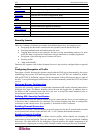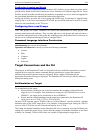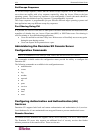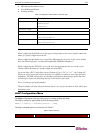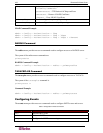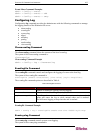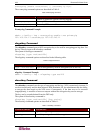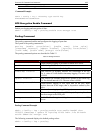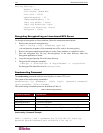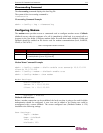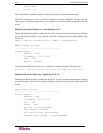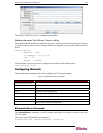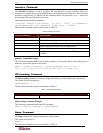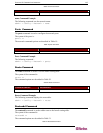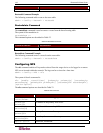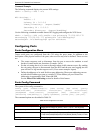
110 DOMINION SX USER GUIDE
Portlog Settings :
Enable : false
File Prefix: domSX-NFS
File Size : 65535
UpdateFrequency : 20
TimestampFrequency : 20
Input Log Enable : false
Input Log Directory: input
Output Log Directory: output
Encrypted : false
Decrypting Encrypted Log on Linux-based NFS Server
To decrypt nfs encryption on Linux platform, follow the instructions stated below:
1. Retrieve the current nfs encryption key:
admin > Config > Log > nfsgetkey type rc4
(cut and paste the response of this command into a file, such as: dsx-encrypt.key)
2. Retrieve decryption application and place it on the Linux machine, or compile its source.
3. Save the encryption key file (e.g. dsx-encrypt.key) in the same directory where the
decryption application is stored.
4. Copy the encrypted portlog file to the same directory.
5. Decrypt the file using the command:
./decrypt -f <portlogfile> -e <keyfilename> -o <outputfile>
The decrypted file should be saved in <outputfile>.
Sendeventlog Command
The sendeventlog command sends the local logfile to a remote FTP server.
The syntax of the sendeventlog command is:
sendeventlog [ip ipaddress] [login login] [password password]
[path pathname] [file filename]
The sendeventlog command options are described in Table 13.
Table 13 Sendeventlog Command
COMMAND OPTION DESCRIPTION
ip ipaddress FTP server IP address
login login FTP Server login name
password password FTP Server password
path pathname FTP server path. For example, /ftphome
file filename Filename on FTP server to save log. For example, sxlogfile
Sendeventlog Command Example
admin > Config > Log > sendeventlog 72.236.162.187 login acy
password pasraritansword path sxlogfile file log 32



